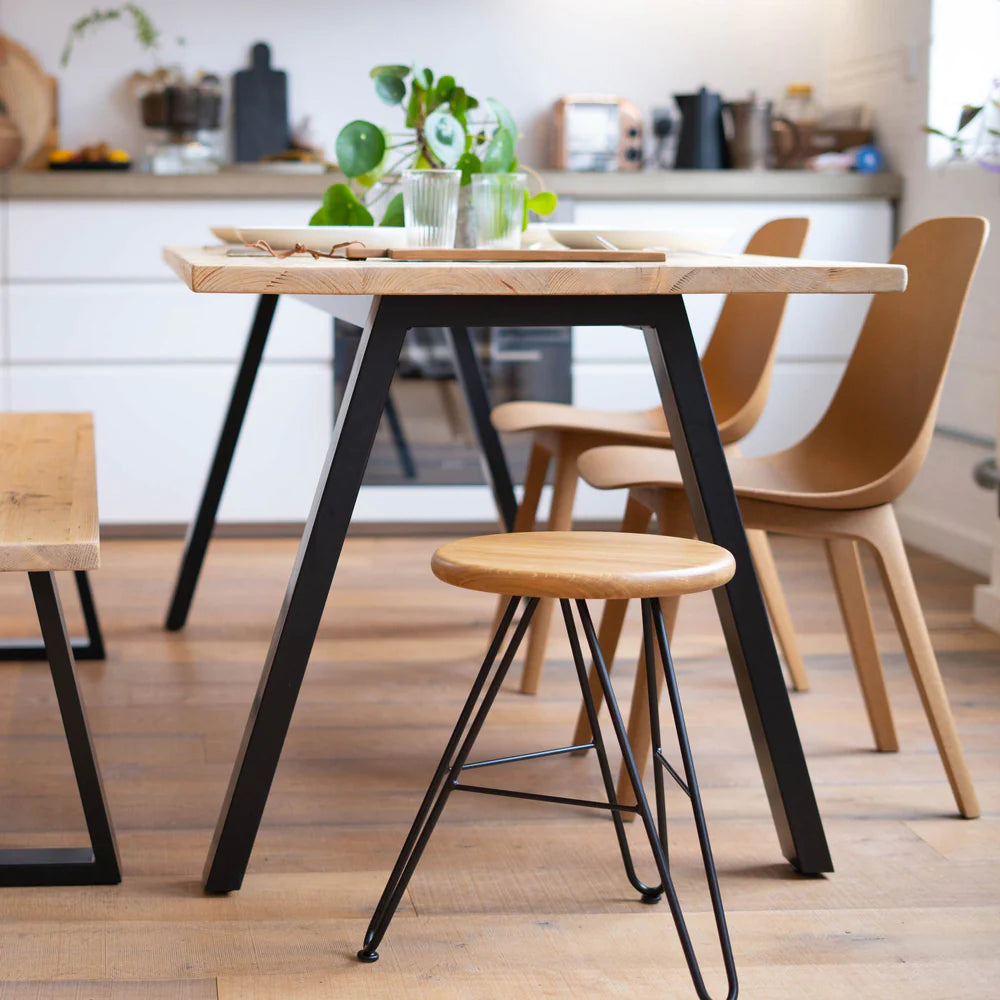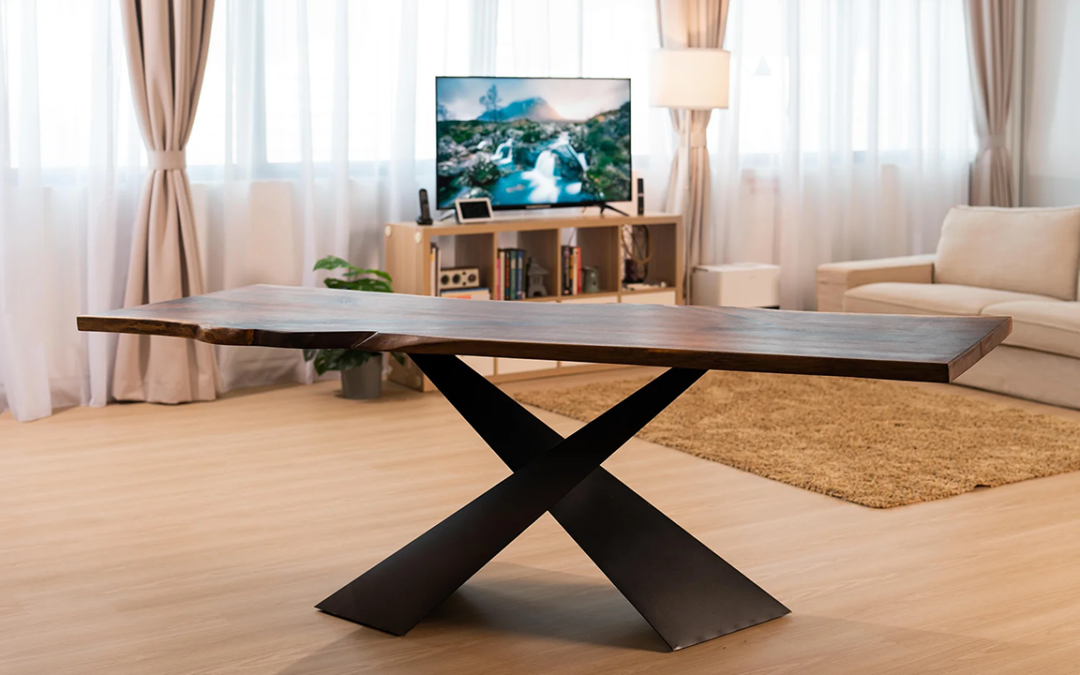Checking Out Different Designs for Dining Room Table Legs to Match Your Visual
A Thorough Consider Eating Table Leg Styles: Discovering the Ideal Suit
Picking the ideal table leg style is crucial for both visual charm and useful functionality. Typical 4 legs provide timeless style and security, while the pedestal base gives boosted legroom and a modern look. For those with larger tables, trestle legs ensure strong support, whereas barrette legs introduce a mid-century modern-day vibe with their minimalist layout. The x-shaped legs blend contemporary style with boosted stability. Each of these options brings one-of-a-kind benefits, making the selection a lot more than just an issue of preference. Discover even more to uncover which style flawlessly matches your dining area and lifestyle.
Conventional 4 Legs
Among the numerous kinds of eating table leg designs, the standard four-leg layout continues to be an ageless option for numerous homes. Four legs give balanced assistance, making certain the table remains stable and capable of bearing substantial weight (dining room table legs).
From an aesthetic perspective, the traditional four-leg style can be conveniently adapted to different interior designs. Whether crafted from wood, steel, or a mix of products, these legs can be delicately sculpted, smooth and minimalistic, or anything in between. Their versatility enables them to complement both rustic and modern settings flawlessly.
Furthermore, the simple structure of the four-leg design helps with simplicity of activity and positioning within a room. Unlike even more facility bases, this style minimizes obstructions, supplying adequate legroom for restaurants. In summary, the conventional four-leg table leg style marries enduring style with functional performance, making it a sharp selection for those looking for both type and function in their dining furniture.
Stand Base
Frequently commemorated for its sophisticated and space-efficient design, the pedestal base is a recognized option to the conventional four-leg setup in table leg styles. This distinct base commonly features a solitary main column supporting the table top, which can vary in kind, from ornately carved timber to sleek, contemporary steel. One of the main advantages of the pedestal base is its capability to make best use of legroom and seating flexibility. Without corner legs, restaurants are afforded better freedom of motion, making it a perfect option for round and oblong tables that promote more intimate and comprehensive gatherings.
Furthermore, the pedestal base's central support can deal with considerable weight, enabling using heavier tabletops, such as marble or thick hardwood. This strength coupled with its visual convenience makes the stand base a preferred selection in both typical and modern indoor settings. It can effortlessly incorporate with numerous layout motifs, from timeless style to minimalist modernity. Furthermore, the central column itself offers a canvas for intricate layouts and imaginative expressions, including an element of visual passion under the table. In summary, the stand base combines performance with style, making it a refined and sensible choice for diverse eating settings.
Trestle Legs
Trestle legs give a durable and ageless foundation for eating tables, defined by their straight cross-bracing and strong support beam of lights. Originating from medieval times, this layout has advanced yet kept its important framework, making it a perennial favorite in both traditional and contemporary setups. The central trestle light beam, typically sustained by 2 or even more upright messages, supplies outstanding stability, enabling larger table lengths without the demand for extra legs.
A substantial advantage of trestle leg tables is the adequate legroom they offer. Unlike tables with four corner legs, the lack of blockages at the table's edges supplies unblocked space for chairs and diners, enhancing convenience and accessibility. This makes trestle tables suitable for suiting larger events, whether in a dining-room or a banquet hall.
The visual versatility of trestle legs is noteworthy. Available in a variety of materials such as timber, metal, and composite, they can be completed to enhance a vast array of interior styles. From rustic farmhouse to smooth modern-day styles, trestle legs can be tailored to suit individual tastes. Their enduring charm and practical advantages make trestle legs an engaging selection for those looking for both design and practicality in their table.
Barrette Legs

The appeal of hairpin legs hinges on their simpleness and flexibility - dining room table legs. Readily available in a variety of materials, including steel and brass, they can be completed in countless colors to match various indoor designs. Whether coupled with a rustic wooden table top or a contemporary glass surface, barrette legs effortlessly blend capability with a touch of classic charm
Toughness is an additional noteworthy attribute of hairpin legs. In spite of their fragile look, these legs are crafted to birth substantial weight, guaranteeing the eating table stays steady and safe. In addition, they are relatively easy to install, making them a popular option for do it yourself fanatics and see this here expert furnishings manufacturers alike.
X-Shaped Legs

Created from materials such as steel, timber, or a mix of both, X-shaped legs can be tailored to match different style preferences. Steel legs commonly offer a sleek and commercial feeling, ideal for loft-style apartment or condos and modern-day dining spaces. On the various other hand, wooden X-shaped legs offer a warmer, recommended you read more rustic charm, ideal for farmhouse or eclectic interiors. The convenience in products permits home owners to click reference customize their eating tables to better fit their overall layout system.
In addition, the design behind X-shaped legs guarantees also weight circulation, reducing the threat of wobbling and enhancing toughness. This makes them particularly appropriate for larger dining tables that require added support. Fundamentally, X-shaped legs blend sensible design with contemporary appearances, making them a classic choice for diverse eating settings.
Final Thought
A thorough understanding of eating table leg styles exposes the unique attributes and advantages of each layout. Trestle legs guarantee durable assistance for bigger tables, and hairpin legs introduce a mid-century contemporary visual.